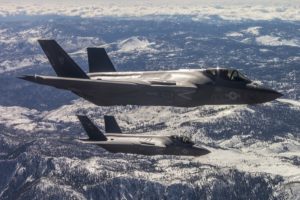
Lockheed Martin [LMT] said on May 1 that it has developed a new weapons rack, called "Sidekick," to increase the internal weapons carrying capacity of the aircraft carrier variant of the Joint Strike Fighter (JSF), the F-35C, which achieved Initial Operational Capability (IOC) in February. "Lockheed Martin has gone out on its own and developed a new weapons rack to incorporate into our internal bays," Tony "Brick" Wilson, a Lockheed Martin F-35 test pilot, told reporters at the company's Global…














